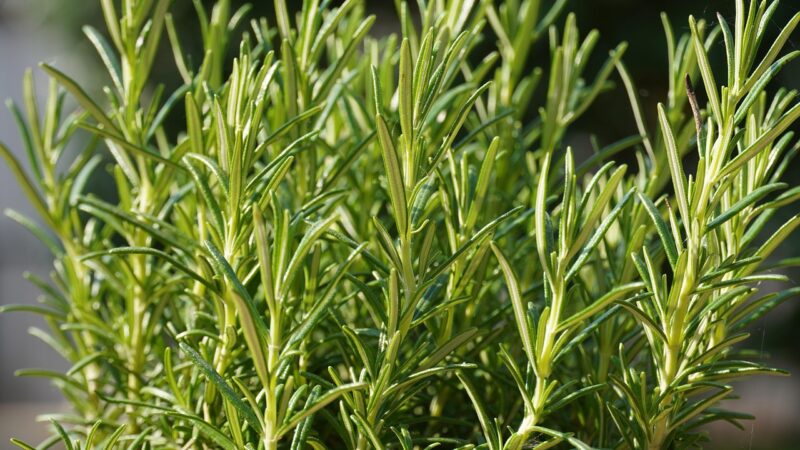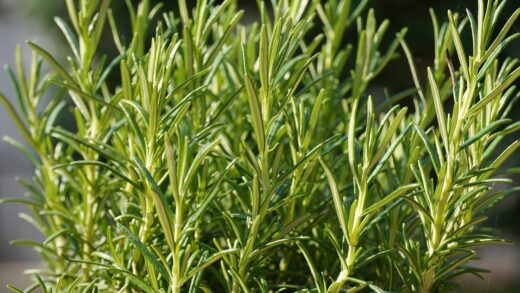The care of rosemary

Rosemary, a beloved aromatic herb native to the Mediterranean region, is a staple in many gardens and kitchens for its distinctive fragrance and culinary versatility. Successfully cultivating this evergreen shrub requires an understanding of its specific needs, which are deeply rooted in its native climate of sunny, dry conditions. Providing the right environment is paramount for a thriving, healthy plant that will produce fragrant foliage for years to come. This involves a careful balance of sunlight, water, soil composition, and temperature, ensuring the plant is neither stressed by excessive moisture nor deprived of the warmth and light it craves. Proper care extends beyond these basic elements, encompassing thoughtful pruning, seasonal adjustments, and vigilance against pests and diseases to maintain its vigor and aromatic quality.
Understanding rosemary’s basic needs
At its core, rosemary thrives in conditions that mimic its Mediterranean origins, a crucial piece of information for any gardener looking to cultivate it successfully. This means prioritizing excellent drainage, as the plant is highly susceptible to root rot in waterlogged soil. The ideal soil composition is sandy or loamy, allowing water to pass through freely while retaining just enough moisture for the roots to absorb. When planting in containers, it’s essential to use a potting mix formulated for succulents or cacti, or to amend a standard potting mix with sand or perlite to improve its drainage capacity. This foundational requirement for well-draining soil cannot be overstated, as it is the most common point of failure for new rosemary growers.
Sunlight is another non-negotiable factor for the health and vitality of rosemary, as it is a true sun-worshipping herb. It requires a minimum of six to eight hours of direct, bright sunlight each day to flourish and develop the essential oils that give it its characteristic potent aroma and flavor. A location that receives full sun exposure is ideal, such as a south-facing garden bed or a sunny patio. Inadequate sunlight will result in a leggy, sparse plant with weakened growth and less flavorful leaves, as the plant stretches in search of more light. For indoor cultivation, a south-facing window is the best option, though it may need to be supplemented with a grow light, especially during the shorter days of winter.
Temperature and air circulation are also key components of rosemary’s preferred environment, reflecting its adaptation to warm, breezy coastal regions. The herb prospers in warm climates and is generally hardy in zones where winter temperatures do not consistently drop to extreme lows. Good air movement around the plant is vital to prevent the onset of fungal diseases like powdery mildew, which can thrive in stagnant, humid conditions. When planting multiple rosemary shrubs, ensure there is adequate spacing between them to allow air to circulate freely, which helps to keep the foliage dry and healthy.
Finally, understanding the plant’s growth habit is essential for its long-term care and maintenance. Rosemary can grow into a substantial shrub, with some varieties reaching several feet in height and width if left unpruned. Regular harvesting and pruning not only provide a steady supply of fresh herbs but also encourage the plant to become bushier and more compact. This practice prevents the plant from becoming woody and sparse at its base, a common issue with older, unmanaged specimens. A proactive approach to shaping the plant from a young age will result in a more attractive and productive herb for many seasons.
More articles on this topic
Ideal soil and location
Selecting the perfect location is the first step toward a thriving rosemary plant, and this decision hinges on providing ample sunlight. An ideal spot in the garden is one that is bathed in direct sunlight for the better part of the day, typically for at least six hours. In regions with exceptionally hot summers, a location that offers some light afternoon shade can be beneficial, protecting the plant from the most intense heat which can sometimes cause stress. When considering a site, observe the sun’s path throughout the day to ensure your chosen location truly meets these requirements, as this is the most critical environmental factor for vigorous growth and oil production.
The soil composition must be tailored to rosemary’s need for exceptional drainage, a characteristic that mimics the gritty, sandy soils of its native habitat. Heavy clay soils that retain water are the enemy of rosemary, as they lead to saturated roots and the almost certain development of root rot. To prepare a garden bed, it is often necessary to amend the existing soil by incorporating organic matter like compost, which improves structure, along with coarse sand or fine gravel to enhance porosity. This creates a loose, friable medium that allows water to drain away quickly, keeping the roots healthy and preventing fungal issues.
For gardeners with heavy clay or poorly draining soil, planting rosemary in raised beds or containers is an excellent alternative. A raised bed elevates the root zone above the problematic native soil, allowing you to fill it with a custom blend of high-quality topsoil, compost, and sand or perlite. This method provides complete control over the growing medium, ensuring perfect drainage from the outset. Containers are equally effective, provided they have ample drainage holes at the bottom and are filled with a fast-draining potting mix. The choice of container material, such as terracotta, can also help by allowing the soil to dry out more quickly between waterings.
The pH of the soil is another important consideration, although rosemary is relatively adaptable in this regard. It generally prefers a soil pH that is neutral to slightly alkaline, typically ranging from 6.0 to 7.5. Most garden soils fall within this range, but it is always a good practice to test your soil’s pH before planting. If your soil is overly acidic, you can amend it by adding garden lime to raise the pH to a more suitable level. This adjustment helps to ensure that essential nutrients are readily available for the plant to absorb, contributing to its overall health and resilience.
More articles on this topic
Watering techniques for healthy growth
Proper watering is a delicate balance when it comes to rosemary, as the plant is far more tolerant of dry conditions than it is of excessive moisture. The golden rule is to allow the soil to dry out completely between waterings, a practice that prevents the roots from becoming waterlogged. To determine if it’s time to water, insert your finger about two inches into the soil; if it feels dry at that depth, it’s an indication that the plant needs a drink. This method is much more reliable than adhering to a strict schedule, as watering needs will fluctuate with changes in temperature, humidity, and sunlight exposure throughout the year.
When you do water, it is crucial to do so deeply and thoroughly, ensuring that the entire root ball becomes saturated. This encourages the roots to grow deeper into the soil in search of moisture, which builds a stronger, more drought-resilient plant. Water the plant at its base, avoiding the foliage as much as possible, as wet leaves can increase the risk of fungal diseases, particularly in humid conditions. Continue watering until you see excess water running out of the drainage holes of a container or until the soil in a garden bed is moistened to a significant depth.
The frequency of watering will vary significantly depending on several factors, including the plant’s location and the time of year. A rosemary plant in a small terracotta pot exposed to full sun on a hot summer day will require watering far more often than a large, established shrub in a garden bed during a cool, overcast week. During the active growing season in spring and summer, you may need to water every one to two weeks, while in the dormant winter months, this can often be reduced to once a month or even less, especially for plants grown outdoors. Always rely on the soil dryness test rather than a calendar.
Overwatering is the single most common mistake in rosemary care and can lead to fatal root rot, a condition from which the plant rarely recovers. Signs of overwatering can be deceptive, often mimicking the appearance of an underwatered plant, with yellowing or browning leaves and a wilting appearance. However, the key difference is that the soil will be consistently damp. If you suspect you have overwatered, cease watering immediately and allow the soil to dry out completely. For potted plants, you may need to repot into fresh, dry soil if the problem is severe.
Pruning and harvesting strategies
Pruning is not just for harvesting; it is a vital practice for maintaining the health, shape, and productivity of your rosemary shrub. The best time to perform significant pruning is in the spring, after the plant has finished flowering, as this allows it to recover and put on new growth throughout the summer. Regular, light pruning throughout the growing season, however, is highly encouraged. This involves snipping off the top few inches of the stems, which stimulates branching and results in a fuller, bushier plant. This regular trimming prevents the plant from becoming tall and leggy with a woody, unproductive base.
When harvesting rosemary for culinary use, it is best to take cuttings from the new, soft green growth, as this is where the flavor and aroma are most concentrated. Using sharp, clean scissors or pruners, snip off stems that are four to six inches long. Try to harvest evenly from all around the plant to maintain a balanced and attractive shape. Avoid taking too much from one area, which can create a lopsided appearance and stress that part of the plant. Regular harvesting in this manner serves as a form of light pruning, continuously encouraging new growth.
A more substantial annual pruning is necessary to manage the size of the plant and to prevent it from becoming overly woody. For this task, you can cut back up to one-third of the plant’s total mass. Focus on trimming back the longest and oldest branches to encourage new shoots to emerge from the base. It is crucial, however, to avoid cutting into the old, thick wood that has no active growth on it, as these areas may not be able to produce new shoots. Always make your cuts just above a set of leaves or a side branch to ensure the plant can continue to grow from that point.
As the plant ages, it will naturally become more woody at its base. While some woodiness is inevitable, heavy annual pruning can help to rejuvenate the shrub and keep it productive for a longer period. For very overgrown and woody plants, a renewal pruning may be necessary, which involves a more drastic cutting back in the spring. Even with this, you must be careful to leave some green, leafy stems, as cutting the entire plant back to bare wood will likely kill it. Consistent, thoughtful pruning from a young age is the best strategy to avoid the need for such drastic measures.
Fertilizing for optimal performance
Rosemary is a light feeder and generally does not require a heavy fertilization regimen to thrive, a trait it inherited from growing in the often nutrient-poor soils of its native Mediterranean environment. In many cases, a rosemary plant grown in a garden bed with reasonably fertile soil may not need any supplemental fertilizer at all. The slow breakdown of organic matter, such as a layer of compost applied as mulch, is often sufficient to provide all the nutrients the plant needs throughout the growing season. Over-fertilizing can be more detrimental than under-fertilizing, as it can lead to excessive, weak growth and a dilution of the essential oils that provide the herb’s signature aroma and taste.
If you do choose to fertilize, it is best to do so sparingly and only during the active growing period in the spring and summer. A single application of a balanced, all-purpose liquid fertilizer, diluted to half-strength, in the early spring is typically all that is needed to give the plant a boost as it begins its new growth cycle. Alternatively, you can top-dress the soil around the plant with a slow-release granular fertilizer formulated for shrubs or herbs. Always follow the product instructions carefully to avoid applying too much, which can burn the roots and harm the plant.
Container-grown rosemary plants have slightly different fertilization needs compared to those planted in the ground. Because the nutrients in potting mix are gradually depleted over time through watering, potted plants will benefit from more regular feeding. During the spring and summer, you can feed your containerized rosemary with a half-strength balanced liquid fertilizer every four to six weeks. This regular but light application will replenish the nutrients in the soil without overwhelming the plant. Cease all fertilizing in the autumn and winter when the plant’s growth naturally slows down.
It is important to observe your plant for signs that may indicate a nutrient deficiency, although this is relatively uncommon with rosemary. Yellowing leaves, particularly on the older parts of the plant, can sometimes be a sign of a nitrogen deficiency, while slow or stunted growth may also indicate a need for nutrients. Before reaching for fertilizer, however, first ensure that other care requirements, such as proper watering and adequate sunlight, are being met, as these are more often the culprits for poor plant health. Only use fertilizer as a supplement when you are confident the plant’s other environmental needs are satisfied.
Common pests and diseases
While rosemary is a relatively hardy and pest-resistant herb, thanks in part to its aromatic oils which can deter many insects, it is not entirely immune to problems. One of the most common issues, especially for plants grown indoors or in humid, shady conditions, is powdery mildew. This fungal disease appears as a white, powdery coating on the leaves and stems, and while it may not kill the plant outright, it can weaken it significantly. To prevent powdery mildew, ensure the plant has excellent air circulation by providing adequate spacing and pruning to open up its structure. If an infection occurs, improve air movement and consider using a horticultural oil or a potassium bicarbonate spray to treat it.
Root rot is arguably the most serious threat to rosemary’s health and is almost always the result of overwatering and poorly draining soil. This fungal disease attacks the roots, causing them to decay and lose their ability to absorb water and nutrients, leading to a swift decline and often death of the plant. The symptoms above ground include wilting, yellowing or browning leaves, and a general failure to thrive, even when the soil is moist. Prevention is the only effective strategy: plant in fast-draining soil, allow the soil to dry out between waterings, and never let the plant sit in a saucer of standing water.
Among the pests that can occasionally trouble rosemary are aphids and spider mites, particularly on plants that are stressed or grown indoors. Aphids are small, sap-sucking insects that cluster on new growth and the undersides of leaves, causing distortion and secreting a sticky substance called honeydew. Spider mites are tiny arachnids that are difficult to see with the naked eye but can be identified by the fine webbing they create on the plant. Both pests can be managed by spraying the plant with a strong jet of water to dislodge them or by using insecticidal soap or neem oil for more persistent infestations.
Maintaining the overall health of your rosemary plant is the best defense against both pests and diseases. A plant that is receiving the proper amount of sunlight, water, and air circulation will be vigorous and much more resilient to attack. Regularly inspect your plant for any early signs of trouble, such as discolored leaves, sticky residue, or visible pests. Catching a problem early makes it much easier to manage and control before it can cause significant damage, ensuring your rosemary remains a healthy and productive part of your garden.
Overwintering rosemary successfully
The strategy for overwintering rosemary depends entirely on your local climate and the specific hardiness of the variety you are growing. In regions with mild winters, where temperatures only occasionally dip near freezing, most rosemary varieties can be left outdoors in the ground with minimal protection. To give them an extra layer of defense against the cold, apply a thick layer of mulch, such as straw or shredded bark, around the base of the plant after the first hard frost. This insulates the root system from temperature fluctuations and helps to conserve soil moisture.
For gardeners in colder climates where temperatures consistently drop well below freezing, bringing rosemary indoors for the winter is often the only way to ensure its survival. This applies especially to plants grown in containers, as their roots are more exposed to the cold than those of in-ground plants. Before the first frost is expected, move your potted rosemary to a sheltered location, such as an unheated garage or a cool, bright room indoors. The ideal indoor wintering spot is one that receives plenty of light, such as a south-facing window, and has cool temperatures, ideally between 40 and 60 degrees Fahrenheit.
The transition from outdoors to indoors should be gradual to avoid shocking the plant. A few weeks before moving it inside for good, start by bringing the plant indoors at night and taking it back out during the day. Before the final move, thoroughly inspect the plant for any pests that may be hitching a ride, such as aphids or spider mites, and treat them accordingly. Once indoors, the plant’s growth will slow significantly, and its watering needs will be greatly reduced. Water only when the soil is completely dry to the touch, and do not fertilize at all during the winter months.
A common challenge when overwintering rosemary indoors is providing adequate light and preventing fungal diseases due to poor air circulation. If a south-facing window is not available or if the plant still appears to be struggling for light, supplementing with a grow light can make a significant difference. To improve air circulation, you can run a small fan in the room for a few hours each day. When spring arrives and the danger of frost has passed, gradually reintroduce the plant to the outdoor environment over a period of one to two weeks to allow it to acclimate to the increased light and temperature.



















